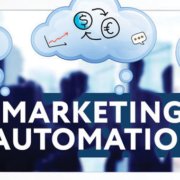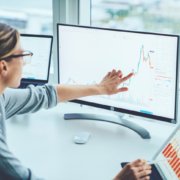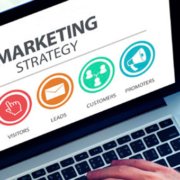Senior Living Sales Tips: How to Engage Prospects Online
Not too long ago, the first conversation with senior living sales prospects happened either over the phone with the initial discovery call or in person during an event or tour. Today, the first conversation with prospects is digital in nature. Eighty-seven percent of senior living sales start online, and providers have only seven seconds to engage prospects.
Here are five senior living sales tips to increase engagement and conversions.
Senior Living Sales Tip #1: It’s Not About You.
Your prospects don’t come to your senior living website because they have nothing better to do. They come because they have a compelling need or concern, many questions, and a desire to connect with helpful resources to guide their decision-making journey.
Remember, you only have seven seconds. So ask yourself how you’re going to connect, engage, and convert them to a lead. Prospects today are much more experiential in their research style. If you have relevant information, they will stay on your site. If not, they will bounce off to a competitor or third-party lead aggregator site.
So make sure you put the most relevant and helpful info front and center on your most trafficked pages, particularly the home page. Include calls-to-action that will lead people to helpful resources they can download. Make sure FAQs are easily accessible in the navigation (better yet, include a Live Chat feature so you can address their questions in real-time).
Senior Living Sales Tip #2: Create Content for All Stages in The Buyer’s Journey.
Ninety percent of website visitors are not sales qualified. Prospects in the Awareness Stage are looking for basic information (e.g., What are the options? What’s included? Can I afford it?).
When they move into the Consideration Stage, they are weighing pros and cons and transitional issues (e.g., Is home or community the best setting? What will we do with all the stuff? Is the family on board? How do we broach the subject with Mom/ Dad?).
By the time prospects move into the Decision Stage, urgency replaces ambivalence and the conversation shifts to timing and location (e.g., Which community is going to be the best fit? what funding sources can we tap into? How do we make a smooth transition?).
To meet prospects where they are, your website must offer a range of content types to consume throughout the journey and multiple CTAs (calls to action) to advance leads. You’ll want to gate some content, but you should also “un-gate” some content as well. Blogs make great un-gated content (we recommend two to four original educational blog posts per month). Offering downloadable activity calendars, menus, and newsletters works well, too.
Guides, e-books, and tool kits work best for gated content (the prospect must exchange limited contact information in exchange for the valuable resource). Offering digital brochures and pricing resources are very popular with prospects and have high engagement and conversion metrics. We have found that e-newsletters are the number one tool to re-engage website visitors.
Senior Living Sales Tip #3: Make Your Website Interactive.
Websites today have to be more than online brochures. Less copy and more interactive experiences will make the website “sticky” so prospects stay longer and come back often.
Need some ideas? Live chat (not self-managed, not bots, and not foreign-based) produces high conversion rates with 40% of chats turning into leads and 20% converting to a scheduled tour. Interactive surveys (such as financial calculators) and self-guided decision tools (such as Roobrik) engage and convert anonymous website visitors into marketing- and sales-qualified leads. Interactive site maps, virtual tours, and room planners allow prospects to explore from their couch, without the drive time or sales pitch.
Senior Living Sales Tip #4 Optimize the Contact Us Form.
Prospects at each stage will respond to different CTAs, so offer them a menu of choices. Create a “pick list” with options such as the following:
- Download a brochure
- Check pricing
- Join us for lunch
- Schedule a home visit
- Schedule a tour
- Attend an upcoming event
- Speak with an advisor
- Subscribe to our newsletter and/or blog
Sales Qualified Leads (SQLs) who opt in to face-to-face or voice-to-voice interaction should immediately go to the community sales team. We recommend marketing automation to nurture early stage leads with personalized workflows. This allows sales teams to stay focused on high-conversion opportunities without the distraction of following up with leads that are not ready.
Senior Living Sales Tip #5: Attract and Convert More Leads, Tours, & Move-Ins with Essential Resources.
Below, we’ve rounded up some of our favorite resources. But you can find others in our Senior Living Marketplace.
- Senior Living SMART – website design, marketing automation, content development
- SiteStaff – live chat staffed by college-educated Americans trained for senior living
- Roobrik – self-guided decision tools with low lead-acquisition costs and high conversions
- Marchex – call tracking to measure conversion points for digital, social, and traditional channels
- Design Floor Plans – interactive sitemaps, room planners, 2- and 3-D floor plans
Need help getting your sales team to embrace this online environment?
We love working with marketing and sales teams. Our approach helps make everyone’s jobs easier. Let’s chat about your needs!












